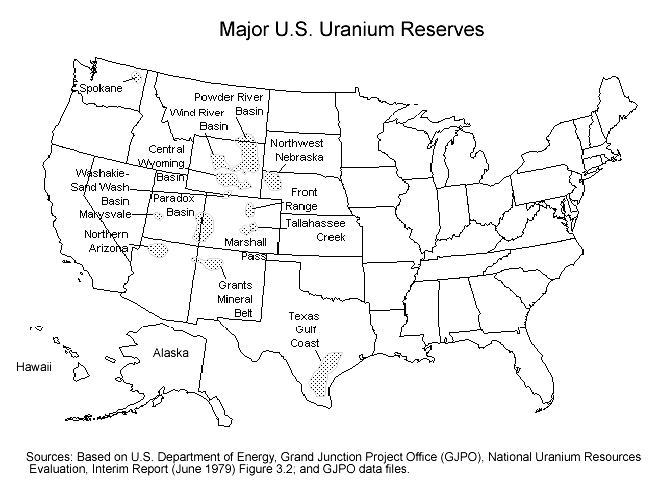Nuclear Reactors 600 - History Of Uranium Production In The U.S. - 1 of 4 Parts
Part 1 of 4 parts
I have blogged before about uranium mining and the global uranium marketplace before. Today I thought I would dive more deeply into the uranium mining industry in the U.S.
The U.S. uranium mining industry began around 1955 and flourished during the Cold War until about 1980. The U.S. had generous incentives for uranium mining because it was building up its nuclear arsenal during the Cold War. A uranium market analyst said, “It's been government-sponsored, government-subsidized just since the beginning. Trying to sort that out and find where there's a free market in uranium — I find that very questionable.”
The U.S. incentives included a ten -ear guarantee for the price that the federal government would pay for high-grade uranium ore. There was also a ten-thousand-dollar discovery and production bonus for each new ore deposit that was opened. Factoring in inflation since then, the bonus would be almost a hundred thousand dollars in today’s currency. These incentives triggered a uranium “gold rush” in the western states. As one analysist said, “It was crazy around this part of the country. Everyone with a jeep and a Geiger counter was out trying to get rich.”
During the 1960s, the federal government had filled warehouses with enough uranium stockpiles to the extent that the incentive program was not longer needed, and it was cancelled. However, there were rules that stayed in place against the import of foreign uranium until 1975. After that a growing percentage of foreign uranium entered the marketplace.
Inexpensive high-quality uranium ore came from deposits in Canada and Australia. By 1987, the U.S. was importing almost fifteen million pounds of uranium. Domestic production fell by a third to about thirteen million pounds. Although foreign competition did affect U.S. uranium production, the construction boom of commercial power reactors in the 1970s did keep U.S. mines in operation
The meltdown of a reactor at Three Mile Island in 1979 triggered a powerful backlash against nuclear power in the U.S. In 1986, the nuclear disaster at Cernobyl in Ukraine irradiated the country side and caused the permanent evacuation of a Ukrainian city. The U.S. love affair with nuclear power ground to a halt.
During this period, utilities were becoming concerned about the time and money necessary to license and construct nuclear power plants. Actual construction of nuclear power plants fell well below projections for the 1980s. This, in turn, depressed the market for uranium. When the last wave of nuclear power plants came on line in 1990, U.S. uranium production was at a thirty-
five year low.
Following the fall of the Soviet Union in 1991, it was revealed that the Soviets had been dumping cheap uranium ore onto the U.S. market prior to the breakup. The U.S. put restriction on the import of uranium ore from the old Soviet bloc countries in 1992 which provided some temporary relief for U.S. uranium miners. However, in 1993, the U.S, signed a contract for the Megatons to Megawatts program with Russia to buy five hundred tons of weapons-grade uranium. The high-grade uranium would be mixed with low grade ore to reduce the purity so that it could be made into nuclear fuel for U.S. power reactors. Over the next twenty years, this Russian uranium was used to supply about one third of the fuel for U.S. commercial nuclear power plants.
Please read Part 2
